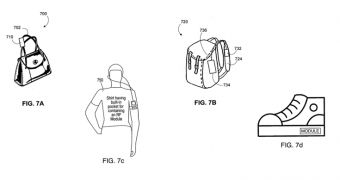A new patent filing from Apple reveals that the company wants to provide ever-present access to the Internet through a series of tiny RF modules that can be toted or placed almost anywhere. The invention is aimed at notebooks, of course, since the iPhone already offers on-the-go Internet access.
The new Apple patent, entitled “Personal area network systems and devices and methods for use thereof,” talks of a system for allowing products with only short-range circuitry, such as iPods and MacBooks, to connect to and leverage those equipped with long-range technology, such as the iPhone or specially designed RF modules.
AppleInsider has found in the patent filing that these special RF modules would be “constructed to be a high efficiency, low cost, devices,” which could lack a direct user interface, as is the case with the company’s AirPort base stations. According to the source, they would package short-range circuitry – such as WiFi, Bluetooth and other high frequency systems (2.4 GHz, and 5.6 GHz communication systems) – to connect to devices that lack long-range circuitry, in addition to long-range circuitry that those host devices can tap into, such as GSM, GPRS, EDGE, and CDMA.
The tiny RF modules would be “ubiquitous in that they permeate every aspect of a person’s life,” Apple says. “For example, a user may keep an RF module on his or her person such in a purse, handbag or article of clothing, in a house, a transportation vehicle (e.g., a car), or an office. This way, a user need not worry about having to carry a long-range communications device wherever he or she may go, as an RF module may be kept in locations frequently visited by the user.”
It's nice that Apple thinks up these cool ideas of having access to the Internet anywhere, anytime, no strings attached (literally). However, some will argue that small devices such as these reported RF-modules would also pose a threat to the privacy-focused user.

 14 DAY TRIAL //
14 DAY TRIAL //